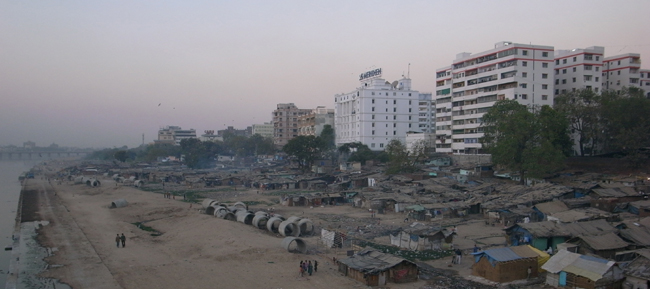
The dynamically advancing urbanization within the framework of „globalised“ India during the past twenty years has lead to extreme mechanisms of city development and city formation in its metropolis‘. There are enormous leaps of measure, which had been made possible since the early nineties, based on the socialistic structure of the state due to the liberalisation of the free market economy.
New dimensions of neoliberal powers, occupative urbanism as well as functional and manipulative processes of the social balance of interest were created, which city planners nowadays have to face and deal with. «vertical slums», «slum resettlements», enclave settlements for diversified educated stratum such as «gated communities», «gated townships» and furthermore «integrated townships» are signs of this particular policy.
The enormous territorial and demographic development of post urban structures spans urban as well as private space and pervades the traditional dialectics of towns and countryside like a rhizome. City development processes in those megalopolis’ catalyze and accelerize each other at a speed and precision which are found only rudimentally in european cities of the modern time.
The demand for new strategies beyond the idealism of characteristically ideal cityplans, is a most urgent demand nowadays.
New approaches are being looked for through which the manifestation of segregation and fragmentation of the urban space of the modern and postmodern era with its marginal phenomena can be taken to a further development based on the principles of the CIAM (Athens Charter)
Focussing on the functional chain of those Megalopolis of today’s world, the simultaneity of their ambivalent shape of town, allows us to open a wide field of indications to find and formulate answers. The missing conception of the city as a collective and self contained unit has shifted itself to a time and space dependent urban phenomenon, as a network of various and multiple perspectives: situational and performative at the same time, always destructing and rebuilding - a structure, which doesn’t allow us to limit or comprehend it by the means
of formal criteria.
„In the future, we may even be able to teach you something.“ Juan Pedro Posani
What kind of space can be created in this field of ambivalence? What are the economic, social and political functional chains, what are the programs, the strategies behind it?
contact imprint sponsors © graufelder.net Eine Veranstaltung im Rahmen des Hamburger Architektursommers |